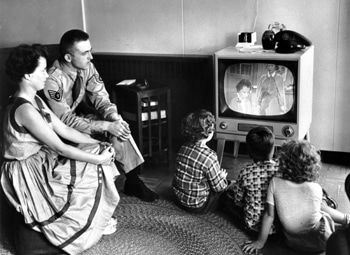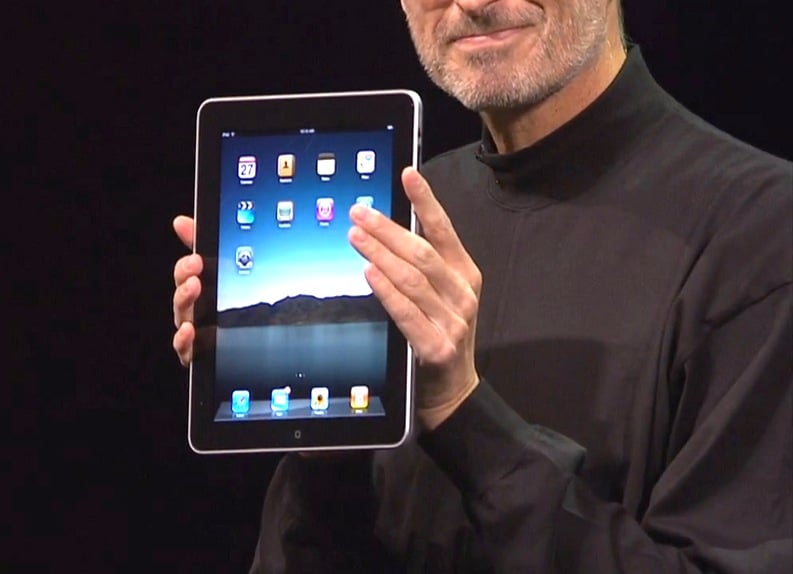
The “second screen” may move closer to the mainstream when the TV companion app Zeebox launches in the US next week, ahead of wider imminent deployment by BSkyB.
But where is the real value in the hot new idea that many in broadcasting are still beginning to explore?
“There’s no difference in the creative at all,” Neil Mortensen, research director of the UK TV umbrella and traditional-advertising champion Thinkbox, told a Royal Television Society seminar on the topic on Tuesday. “It all revolves around extensions of (viewers’) current behaviour.”
 Today, aggregated online discussion of on-screen TV shows is a second-screen quick win – prescribing hashtags is easy. Broadcasters and producers are also concocting engagement propositions like voting apps and game show participation. But these are mostly accompaniments to content that is still conceived for a linear TV screen.
Today, aggregated online discussion of on-screen TV shows is a second-screen quick win – prescribing hashtags is easy. Broadcasters and producers are also concocting engagement propositions like voting apps and game show participation. But these are mostly accompaniments to content that is still conceived for a linear TV screen.
“People have always been doing something else, like doing the ironing, while TV is on,” Juliette Otterburn-Hall, digital director of UK independent TV producer Shed Media, told Tuesday’s seminar.
She cited extra production costs and uncertainty over whether networks or producers own the accompanying products as potential issues around second-screen development. But Otterburn-Hall said issues could be ironed out as the matters get thrashed out: “We’re used to making programmes that you sell, distributing it; we understand it. This adds a whole myriad of complexity. We can overcome these things – it just means more jobs and lawyers.”
Mortensen added: “It improves (viewers’) enjoyment of the TV-viewing experience. A lot of people now say they won’t view the show unless they can interact with it. The fact you are multi-screen and connected is driving more people to watch (TV).”
 Zeebox has gained more plaudits than many for testing the second-screen waters. Its app includes social discussion of TV shows, a channel-changing EPG, live information about on-screen dialogue, e-commerce links and a HTML framework with which broadcasters or producers can create their own in-app viewer engagement modules for use during their shows.
Zeebox has gained more plaudits than many for testing the second-screen waters. Its app includes social discussion of TV shows, a channel-changing EPG, live information about on-screen dialogue, e-commerce links and a HTML framework with which broadcasters or producers can create their own in-app viewer engagement modules for use during their shows.
Having clocked 1.5 million downloads and 300,000 to 400,000 monthly uniques since launching in the UK last year, Zeebox will likely launch in the US next week, co-founder Anthony Rose told Tuesday’s Royal Television Society seminar.
That launch will be alongside “a very big US partnership”. And it will come with an app upgrade packing a stream of friends’ viewing activity and reminder bookings. It will place Zeebox head-to-head with Intonow, the similar companion app that is now under Yahoo’s ownership.
In the UK, Zeebox quickly earned a double-digit-million investment from News Corp’s BSkyB, for a 10 percent stake, that sees Sky’s sales unit selling ads in to the app and will, in the next couple of months, see a subset of Zeebox’s features integrated in to Sky’s own Sky+ PVR remote control and recording apps.
Together with significant US carriage, the tens of thousands of Sky+ users who will soon see Zeebox’s social TV streams could help popularise the concept, which has so far been adopted well by the early crowd, for a more mainstream audience.
If that becomes the case, where will the money be?
 “Advertising will ultimately fuel this whole business,” said Rose, whose app takes brands’ display sponsorships and affiliate links for products mentioned in shows. “Advertising is a $70 billion industry in the US – there’s the potential to have a reinvention of the ad industry – personalised, targeted.”
“Advertising will ultimately fuel this whole business,” said Rose, whose app takes brands’ display sponsorships and affiliate links for products mentioned in shows. “Advertising is a $70 billion industry in the US – there’s the potential to have a reinvention of the ad industry – personalised, targeted.”
But Thinkbox’s Mortensen said conventional TV ad sales already allow advertisers to target consumers using demographic and ratings data well. Mortensen said he sees the second-screen opportunity as “chat”, “play” and “buy”.
Sky product development director Gareth Capon disagreed: “New platforms always give you new advertising and commercial opportunities. If you don’t have great user experience, you won’t have anything to commercialise.”
Capon cited Sky Sports F1’s live in-race camera selector for iPad: “You couldn’t do that without being on someone’s lap.”